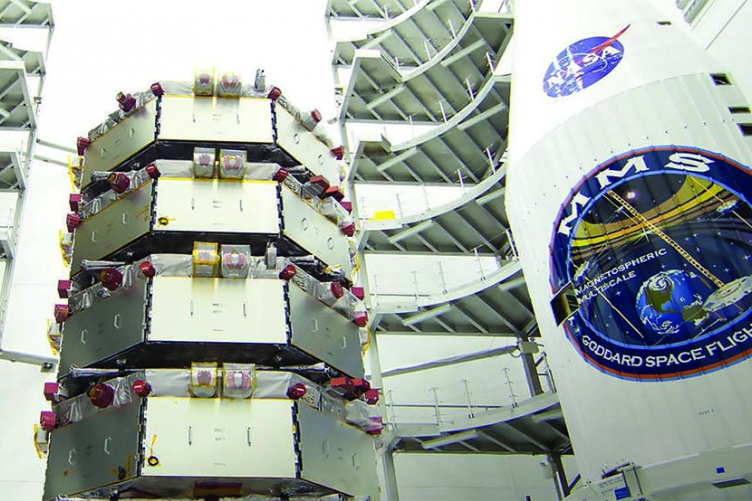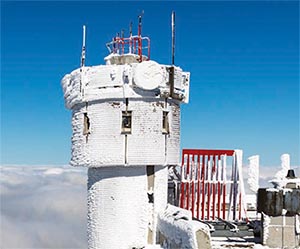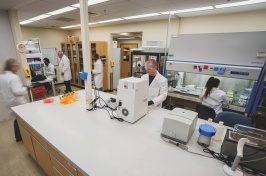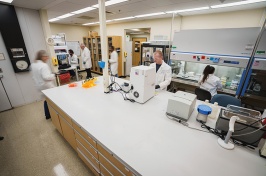
The first data from NASA’s Magnetospheric Multiscale mission (MMS), launched in 2015 with nearly half of its scientific instruments coordinated or built by UNH, were published in the May 2016 journal Science. Collected as the quartet of satellites flew through an elusive magnetic reconnection event, the findings promise to forever change our understanding of what powers giant explosions at the edge of Earth’s magnetic boundary.

In 1954, UNH made its first foray into space science when it commissioned a neutron monitor atop Mt. Washington, 6,288 feet above sea level, to study the sun and the effect of cosmic rays on the Earth. The year 2016 marked the 60th anniversary of the formalization of UNH’s space research into the UNH Space Science Center, as well as the 25th anniversary of the university’s recognition as a space-grant university, just two years after the 1989 formation of the National Space Grant and Fellowship Program.
UNH SPACE SCIENCE IN THE SPOTLIGHT...
• Research scientist Dacheng Lin used data from NASA’s Chandra X-ray Observatory to discover a massive black hole wandering at the edge of a galaxy about 4.5 billion light years away, publishing his findings in The Astrophysical Journal.
• UNH contributed technology to a suite of space weather instruments on NOAA’s next-generation GOES-R weather satellite, which launched in November 2016.
“This dataset is so revolutionary that I think we’ll be mining it for 50 years.” —Roy Torbert, professor of physics, co-author on the Science paper and leader of the UNH MMS team



















































